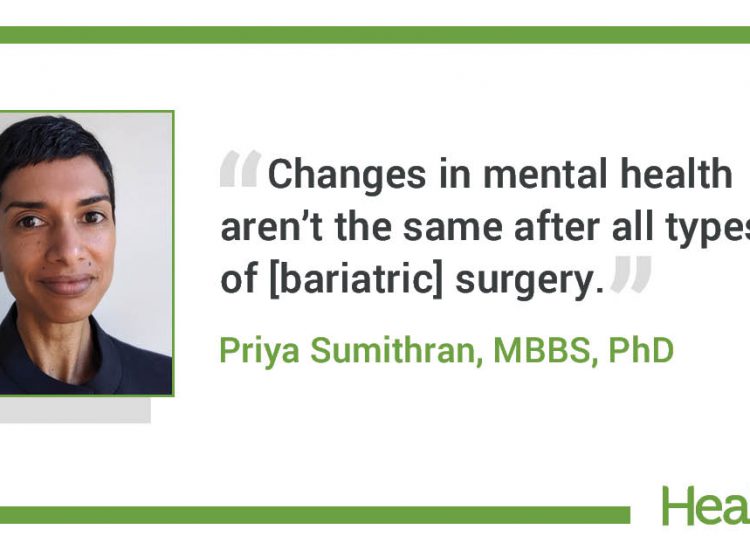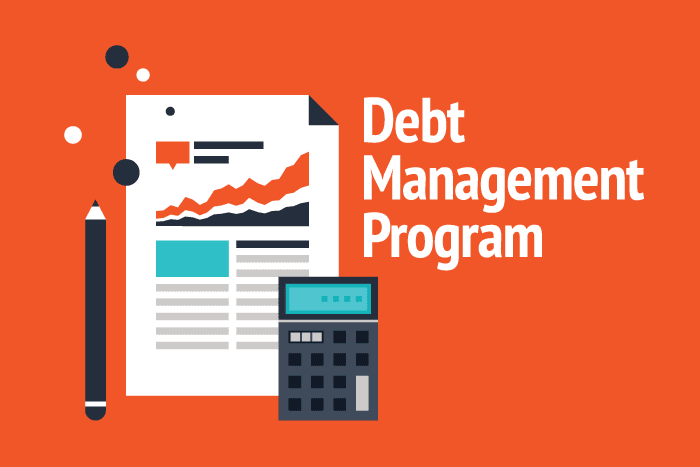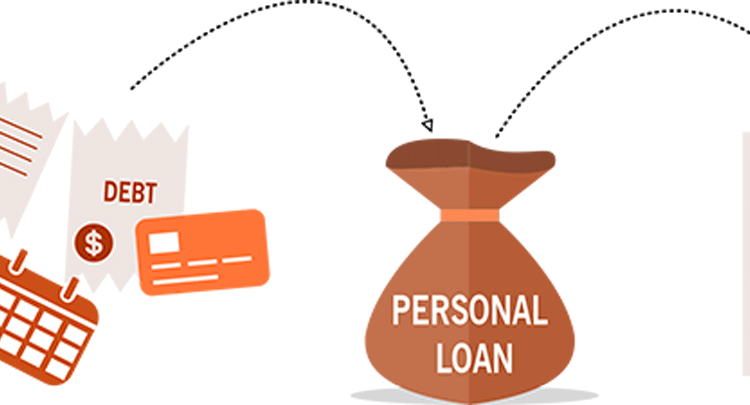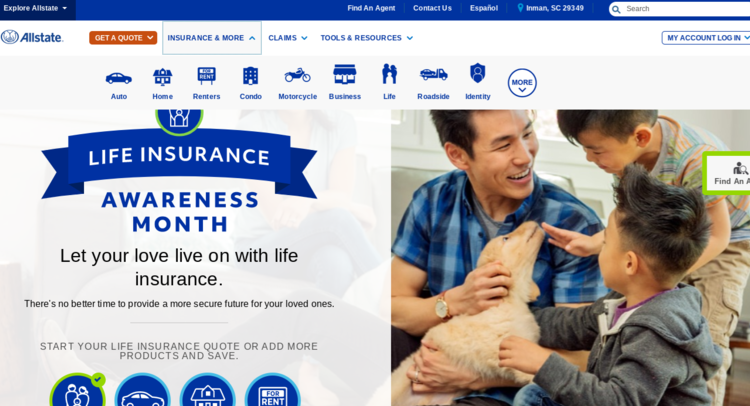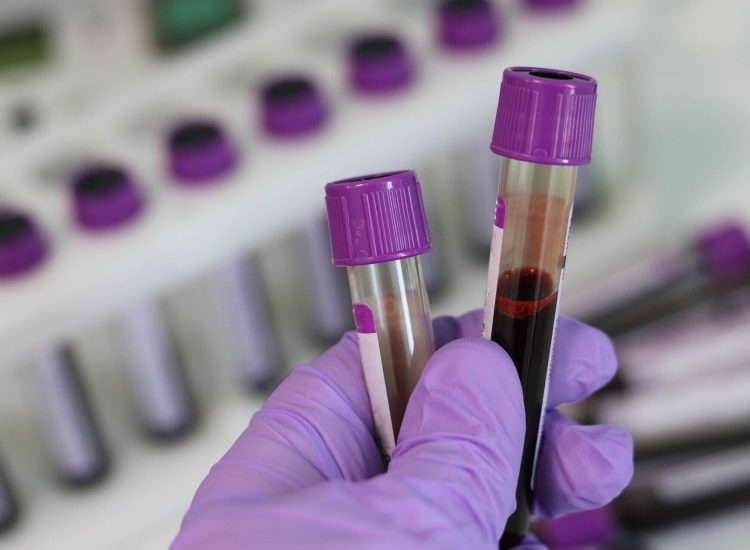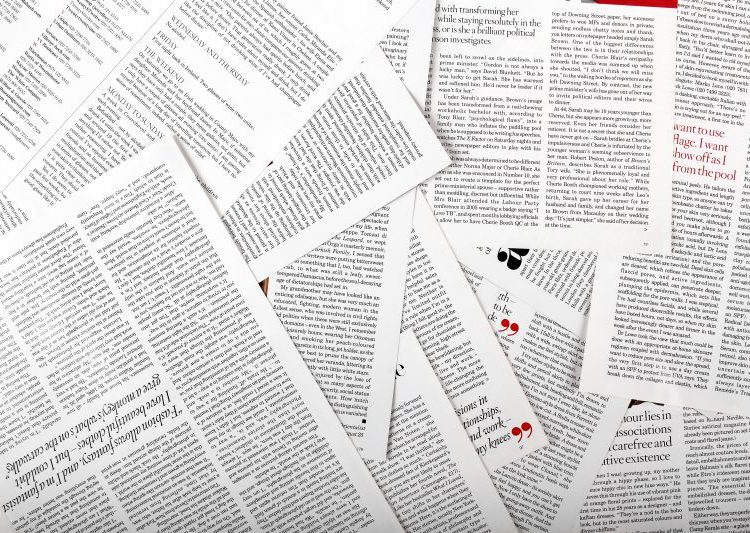Main depressive dysfunction is the second main international reason for incapacity.Reference Ferrari, Santomauro, Herrera, Shadid, Ashbaugh and Erskine1 Roughly one-third of individuals with main melancholy don’t remit even after 4 trials of normal remedies.Reference Rush, Trivedi, Wisniewski, Nierenberg, Stewart and Warden2 Failure to reply to two or extra remedies is named treatment-resistant melancholy (TRD). Ketamine is a novel, extremely efficient and quickly appearing remedy for TRD.Reference Bahji, Vazquez and Zarate3 The 2 important ketamine formulations and routes of administration in antidepressant trials up to now have been intravenous infusions of racemic (R,S)-ketamine, a drug extensively accessible in generic type, and a commercially developed intranasal spray containing S-ketamine (esketamine). Substantive section 3 scientific trials (two of which met their major end-points) have established the efficacy and security of intranasal esketamine,Reference Daly, Trivedi, Janik, Li, Zhang and Li4–Reference Ochs-Ross, Daly, Zhang, Lane, Lim and Morrison7 which has regulatory approval for TRD in lots of nations. Nevertheless, few randomised managed trials (RCTs) have examined the efficacy and security of repeated doses of racemic ketamine in contrast with a placebo/drug management.Reference Arabzadeh, Hakkikazazi, Shahmansouri, Tafakhori, Ghajar and Jafarinia8–Reference Singh, Fedgchin, Daly, De Boer, Cooper and Lim12 These trials reported promising outcomes however have been restricted in pattern dimension and underpowered (n = 5–81). The selection of comparator in trials has implications for last efficacy estimates. Most trials used a saline placebo, which, owing to lack of the psychotomimetic results of ketamine, can result in participant and treater unmasking.Reference Muthukumaraswamy, Forsyth and Lumley13 Latest research have used an lively management drug with psychoactive results for higher masking, for instance midazolam.Reference Murrough, Iosifescu, Chang, Al Jurdi, Inexperienced and Perez14 A meta-analysis discovered that 5 research that in contrast ketamine with saline confirmed a a lot bigger impact dimension (d = 1.8, 95% CI 1.4–2.2) than 4 research that in contrast ketamine with midazolam (d = 0.7, 95% CI 0.4–0.9), measured the day after remedy.Reference Wilkinson, Farmer, Ballard, Mathew, Grunebaum and Murrough15
The optimum route of ketamine administration stays unclear. Racemic ketamine given by 40 min intravenous infusion has proven efficacy, however entails medical complexity and price.Reference Bahji, Vazquez and Zarate3 Pilot RCTs giving racemic ketamine by intramuscular, subcutaneous, oral and intranasal routesReference Arabzadeh, Hakkikazazi, Shahmansouri, Tafakhori, Ghajar and Jafarinia8–Reference Galvez, Li, Huggins, Glue, Martin and Somogyi10,Reference Bathroom, Galvez, O’Keefe, Mitchell, Hadzi-Pavlovic and Leyden16 recommend subcutaneous injection to be a comparatively easy, secure and efficient route.Reference Bathroom, Galvez, O’Keefe, Mitchell, Hadzi-Pavlovic and Leyden16,Reference George, Galvez, Martin, Kumar, Leyden and Hadzi-Pavlovic17 Lastly, the protection of ketamine remedy has principally been examined acutely for two h after every remedy, with fewer knowledge on the cumulative, longer-term security of repeated dosing.Reference Brief, Fong, Galvez, Shelker and Loo18 This trial examines the efficacy and security of repeated racemic ketamine remedies over a 4-week interval in adults with TRD, utilizing subcutaneous administration. Midazolam was used because the lively management. A structured framework comprehensively assessed acute and cumulative security.
CGI-S and CGI-I scores have been handled as ordinal classes and the percentages of a decrease severity or better enchancment for ketamine versus midazolam have been modelled utilizing ordinal regression (with baseline CGI-S and website as mounted components). Additional particulars can be found within the Supplementary materials; see https://osf.io/6fpgu for the total evaluation plan, which was printed previous to knowledge evaluation.
The first final result was modelled utilizing penalised logistic regression within the multiply imputed data-sets, with remedy, baseline MADRS rating and website as covariates. A quantity wanted to deal with (NNT) was calculated from the distinction in proportions with remission estimated from the multiply imputed data-sets. Heterogeneity of the first final result throughout cohorts was examined utilizing logistic regression within the multiply imputed data-sets, with cohort, website, remedy arm, baseline MADRS rating and remedy arm × cohort as covariates. Change in MADRS rating from baseline to finish of RCT was estimated from a linear mixed-effects mannequin that included all baseline-to-session change scores as repeats (with an unstructured covariance matrix), and session, remedy, website, baseline MADRS, and the session × remedy and session × baseline MADRS interactions as covariates.
The first final result was remission, outlined as a MADRS rating ≤10, assessed 3–4 days after the ultimate remedy on the finish of the 4-week RCT. Interrater reliability of MADRS raters was established by viewing and score pre-recorded standardised interviews, with an intra-class correlation coefficient of >0.8 required in opposition to knowledgeable scores. Structured assessments evaluated security at every remedy session (acute results), rising or cumulative results between periods and modifications from baseline to the RCT finish and 4-week follow-up (long-term results) utilizing a prototype of the Ketamine Facet Impact Device (KSET) Reference Brief, Dong, Galvez, Vulovic, Martin and Bayes20 in addition to different scales.
Ketamine and midazolam got subcutaneously into the stomach wall twice per week for 4 weeks, with no less than 3 days between remedies. The preliminary trial protocol (cohort 1) concerned mounted doses at 0.5 mg/kg ketamine and 0.025 mg/kg midazolam (similar injection quantity). At a routine Knowledge Security Monitoring Board assembly reviewing knowledge from the primary accomplished 51 members, a revisiting of drug dosage was really helpful as no members in the whole masked pattern had remitted and the protection profile was good. No interim analyses have been deliberate or performed. Thus, for cohort 2, versatile response-guided dosing was applied. If members had not improved by 50% from pretreatment baseline in MADRS scores at periods 2, 4 and 6, dose escalation steps comprised 0.6, 0.75 and 0.9 mg/kg ketamine and 0.03, 0.0375 and 0.045 mg/kg midazolam (i.e. similar injection volumes between medication at every dose stage). After the 4-week remedy interval, members continued on any antidepressant medicines that have been established prior to check entry, with dosage unchanged previous to and throughout the trial, and have been adopted up 4 weeks later (RCT 4-week follow-up, at week 8). Those that had relapsed at this follow-up have been eligible to enter an open-label remedy section. See Supplementary materials and the trial protocol for additional particulars.
Individuals have been randomly assigned to obtain racemic ketamine hydrochloride (100 mg/mL) or midazolam hydrochloride (5 mg/mL) in a 1:1 ratio. Each medication have been clear options for injection, ready by a trial pharmacist, introduced in vials of similar look. All research personnel (together with the primary statistician conducting analyses) have been masked to the randomisation sequence, apart from the trial statistician producing the sequence, the trial pharmacist and the Knowledge Security Monitoring Board members. Individuals and raters have been requested to guess their remedy allocation 3–4 days after the primary remedy (pre-treatment at session 2) and after the final remedy at RCT finish, and to supply causes for his or her guess. See Supplementary materials for additional particulars.
Predominant inclusion standards have been: age ≥18 years; main depressive dysfunction of no less than 3 months’ length, confirmed by the Structured Medical Interview for DSM-5 Analysis Model; inadequate response to no less than two sufficient trials of antidepressant medicines; any concurrent antidepressant remedy at secure dosage ≥4 weeks previous to and throughout the RCT; and rating ≥20 on the Montgomery–Åsberg Ranking Scale for Despair (MADRS). Reference Montgomery and Åsberg19 For additional particulars, see the Supplementary materials, accessible at https://dx.doi.org/10.1192/bjp.2023.79 , and the trial protocol, accessible at https://osf.io/6fpgu .
The Ketamine for Grownup Despair (KADS) research was a 4-week, randomised, double-blind, active-controlled, parallel-group, multicentre section 3 trial recruited members from six specialist temper issues centres in Australia and one in New Zealand. The authors assert that each one procedures contributing to this work adjust to the moral requirements of the related nationwide and institutional committees on human experimentation and with the Helsinki Declaration of 1975, as revised in 2008. All procedures involving human topics/sufferers have been authorized by the Sydney Native Well being District (RPAH Zone) Human Analysis Ethics Committee (Australia; X16-0146 and HREC/16/RPAH/168) and the Southern Well being and Incapacity Ethics Committee (New Zealand; 16/STH/104). Individuals voluntarily contacted the research staff or have been referred to the research by their physician. All members supplied written knowledgeable consent and have been assessed by a research physician.
Participant and rater guesses of remedy allocation, made on the time of major final result evaluation, are judged as most related to interpretation of the first final result. Bang Blinding Index scores (Supplementary materials) in cohort 1 have been statistically considerably optimistic (i.e. an inclination for guesses to be right) for each members and raters, for midazolam however not ketamine. In cohort 2, masking was not achieved for raters or members within the midazolam group, and was achieved for raters however not members within the ketamine group. Throughout remedy teams in each cohorts, most rater guesses (90–100%) have been primarily based on remedy efficacy, whereas most participant guesses have been primarily based on remedy efficacy or a mix of efficacy and remedy expertise (Supplementary materials). See Supplementary materials for additional particulars.
Severe adversarial occasions have been uncommon and most have been unrelated to the research drug: in cohort 1 there have been two within the midazolam group (suicide try (unrelated) and temper deterioration (unrelated) and none within the ketamine group; in cohort 2 there have been three within the midazolam group (suicide try (unrelated), elevated suicidal ideation (unrelated) and wrist damage (unrelated)) and two within the ketamine group (main dissociative episode (associated) and auditory hallucination (associated)). There have been no deaths reported all through the research. 4 ketamine members (n = 2 in every in cohort) skilled adversarial occasions (non-serious) which led to discontinuation of intervention throughout the RCT section (pores and skin rash, elevated nervousness, headache, elevated melancholy). The well-established acute results of ketamine (psychotomimetic, blood stress elevation, and so on.) have been noticed in each cohorts, being better in cohort 2 ( Desk 3 ). These acute results resolved or returned to pretreatment ranges inside the 2 h commentary interval. No members required medical intervention. See Supplementary materials for additional particulars. There was no proof of cognitive impairment in both remedy group in both cohort (particulars to be reported elsewhere).
At 4 weeks after the final remedy, the distinction in remission charges between ketamine and midazolam in cohort 2 was lowered (8.0% for ketamine, 2.1% for midazolam; OR = 2.02, 95% CI 0.40–10.28, P = 0.4). No between-group variations in MADRS scores have been statistically vital for remission (MADRS ≤10 or MADRS ≤12), response or change in imply scores from baseline in both cohort (Supplementary materials). For CGI-S and CGI- I scores, vital between-group variations have been seen solely in cohort 1, favouring midazolam (Supplementary materials). Few follow-up knowledge can be found at 8 weeks and 6 months after RCT as most members proceeded to open label remedy after the RCT 4-week follow-up. These knowledge are introduced within the Supplementary materials.
For change in imply MADRS scores, ≥50% discount in MADRS scores (i.e. response) and remission (outlined as MADRS rating ≤12), there was no vital distinction between teams in cohort 1 on the finish of the RCT. Nevertheless, in cohort 2 the discount in imply MADRS rating by remedy finish differed between teams by 5.5 factors (95% CI 2.1–8.7), and response charges (29% v. 4%, P = 0.001) and remission charges (MADRS ≤ 12) (22% v. 4%, P = 0.007) have been better, favouring the ketamine group. Equally, CGI-S and CGI-I scores confirmed no between-group variations in cohort 1, however considerably higher outcomes within the ketamine group in cohort 2 (Supplementary materials).
The percentages favouring ketamine in cohort 2 have been greater than the percentages in cohort 1 (OR = 12.96, 95% CI 1.10–152.54, P = 0.04). On the first final result measure, few knowledge have been misplaced on the finish of RCT evaluation (2/68 in cohort 1 and 6/106 in cohort 2), leaving restricted scope for affect from a number of imputation. Remission and response charges within the two cohorts are introduced in Desk 2 .
Recruitment began on 15 August 2016 and closed in April 2020 owing to COVID-19 restrictions. Observe-up was accomplished in Might 2020 and knowledge have been extracted 1 July 2021. In complete, 1033 people have been assessed for eligibility and 184 have been randomised. Three people withdrew consent for the usage of their knowledge, leaving 73 members in cohort 1 (fixed-dose) and 108 in cohort 2 (flexible-dose), of whom 68 and 106 respectively acquired no less than one allotted dose. Most members acquired all eight doses (Supplementary materials). Most members in cohort 2 (30/53 ketamine, 38/53 midazolam) have been escalated to the very best dose stage (see CONSORT diagram in Supplementary materials). Baseline scientific and demographic particulars of the randomised teams inside every cohort are proven in Desk 1 .
Dialogue
This was the most important randomised managed trial of racemic ketamine examined in opposition to placebo in members with TRD, with cohort 2 alone being bigger than complete samples in earlier trials. It confirmed the efficacy and security of an adequately dosed 4-week remedy course given by subcutaneous injection, examined in opposition to an lively management drug. The superior antidepressant efficacy of ketamine was evident solely in cohort 2 (flexible-dose), which concerned response-guided dose escalation from 0.5 mg/kg as much as 0.9 mg/kg. Nevertheless, it was not evident in cohort 1 (fixed-dose), which concerned a dose of 0.5 mg/kg for all remedies. On this severely treatment-resistant inhabitants, of which 24% had failed to reply to remedy with electroconvulsive remedy, adequately dosed racemic ketamine produced advantages that have been massive, being each clinically and statistically superior to midazolam.
Limitations There are a number of vital limitations to the trial. First, the unique dosing protocol was modified on the recommendation of the Knowledge Security Monitoring Board primarily based on resultsof the primary 51 completers, owing to lack of efficacy. Knowledge indicating the bioavailability of subcutaneous ketamine to be about 0.66 weren’t accessible when the current research was designed,Reference Abuhelwa, Somogyi, Bathroom, Glue, Barratt and Foster25 they usually recommend that 0.75 mg/kg subcutaneously is required to approximate 0.5 mg/kg given by intravenous infusion, which was proven to be efficient in prior trials.Reference Bahji, Vazquez and Zarate3 Though this mid-study adjustment supplied helpful insights on two approaches to dosing, it meant that neither cohort achieved the initially deliberate pattern dimension. Examine recruitment was affected by the COVID-19 pandemic, being halted in April 2020 and with vital challenges in restarting. As well as, the research was designed and funded to look at the results of a 4-week remedy interval, with follow-up of progress over an additional 4 weeks. It was not designed to evaluate the longer-term results of continued ketamine administration, an vital query for future examination. Such research have been informative for esketamine remedy, with efficacy and security maintained over 1 yr amongst those that initially responded.Reference Daly, Trivedi, Janik, Li, Zhang and Li4,Reference Wajs, Aluisio, Holder, Daly, Lane and Lim26 The present outcomes do affirm that if ketamine remedy is halted after 4 weeks, the advantages are usually not sustained for all remitters and that ongoing remedy must be thought of. As with section 3 trials of esketamine, last scores have been performed by unbiased raters masked to remedy allocation. Nevertheless, in distinction to the trials of esketamine, efficacy and security have been examined in opposition to an lively management drug with psychoactive results to facilitate masking, and there was a proper analysis of masking (which stays the exception somewhat than the norm in trials on this space and in psychiatry trials extra broadly).Reference Muthukumaraswamy, Forsyth and Lumley13,Reference Freed, Assall, Panagiotakis, Bang, Park and Moroz27 Our outcomes point out that masking was not fully achieved, significantly for members, regardless of the usage of an lively management. That is prone to be a difficulty for all research involving subanaesthetic doses of ketamine, and it might be that masking can’t be fully achieved, given the attribute subjective results of ketamine, and this will have influenced measured outcomes on this and different research on this area. The diploma to which unmasking, with attendant expectancy and disappointment results, is no less than partially a proof for the advantages seen in cohort 2 stays unsure, however a number of strains of proof point out that it doesn’t account for all of the impact. Each raters and members indicated that their guesses have been extra associated to remedy efficacy than remedy expertise, suggesting their guesses have been influenced by post-treatment modifications in temper (or lack of them) greater than intra-treatment subjective results. Additional, there was statistically vital unmasking in cohort 1 however no vital remedy impact. Lastly, use of ketamine intraoperatively beneath common anaesthesia additionally confers reductions in postoperative temper scores to an analogous quantity as that seen in cohort 2 of this trial.Reference Wang, Solar, Ai, Cui, Shi and An28 Future research ought to assess and report masking, however this must be thought of within the context that any efficient remedy for a patient-reported final result equivalent to melancholy shall be unmasked as soon as that remedy’s impact is established, even when the remedy administration is completely masked.
Analysis of security A power of this research is the excellent analysis of security, utilizing a prototype of the Ketamine Facet Impact Device (KSET) – a structured instrument that actively examined for instant, cumulative (between-session) and longer-term side-effects over 4 weeks’ remedy and as much as 1 month after the final remedy.Reference Brief, Dong, Galvez, Vulovic, Martin and Bayes20 Higher psychotomimetic and cardiovascular acute results have been seen in cohort 2 than in cohort 1, in line with observations from prior RCTs inspecting a number of dose ranges that results are dose-related.Reference Bathroom, Galvez, O’Keefe, Mitchell, Hadzi-Pavlovic and Leyden16,Reference George, Galvez, Martin, Kumar, Leyden and Hadzi-Pavlovic17 A number of members (two within the ketamine group, one within the midazolam) reported a way of wanting the research drug, though this will signify the searching for of aid from melancholy and nervousness somewhat than the event of drug dependence. No use of ketamine exterior the research protocol was reported. General, the remedy confirmed acute, between-session and longer-term security profile when given inside a cautious security monitoring framework. This argues for remedy provision inside such a framework, in each scientific and analysis settings, somewhat than proof that acute and cumulative security monitoring just isn’t required. The research additionally evaluated the persistence of profit with follow-up of all members 4 weeks after remedy had ended. At 4-week follow-up, remission charges for cohort 2 have been 2% v. 8% (midazolam v. ketamine), with large confidence intervals and not considerably totally different. This helps different proof that ongoing remedy is required to take care of antidepressant results for many members.Reference Daly, Trivedi, Janik, Li, Zhang and Li4 The numerous distinction in CGI-I and CGI-S scores in cohort 1 at follow-up are tough to interpret, given the shortage of distinction on the opposite final result measures (remission, response, imply change in MADRS scores) at this identical time level, noting that the MADRS supplies a extra detailed and particular analysis of melancholy than the CGI scales.
